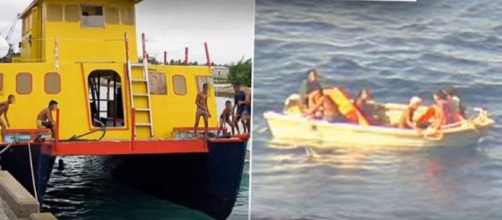Rescue crews from Australia and the United States have come together in the rescue search for any remaining survivors from the Kiribati ferry tragedy, when the ferry overturned in the Pacific Ocean nearly two weeks ago, the Guardian reported. Previous reports stated that the Kiribati ferry had approximately fifty passengers but Kiribati’s President Mamau believes that twice that many may have been on-board on that ill-fated day.
Kiribati’s president makes statement and rescue efforts
Mamau announced that he had set aside some time for prayer with the possibility that many more of the ferry’s passengers would be found “alive” as rescue efforts were increased with aircraft from both Australia and the United States Coast Guard after the fragile ferry did not arrive at its destination and ended up sinking sometime on January 18, 2018.
On Monday, rescue efforts from the maritime authority in Australia had begun an exploration on the west side of Kiribati and the United States Coast Guard has dispatched a C-130 that is expected to arrive on-site sometime on Tuesday. Fiji is leading the search and rescue through New Zealand’s rescue management facility.
The lead administrator from New Zealand’s rescue management facility stated that New Zealand had launched their “P-3 Orion’s” for the search and had searched all day on Monday, spanning some 148,649 square miles, and that since the area being search is so secluded, they have experienced several challenges concerning their rescue efforts.
Kiribati survivors and ferry accident
On Sunday, a marine patrol rescue vessel, along with medical staff, was on their way to a fishing vessel which had found and rescued the 7 survivors.
Those survivors' health status on the Kiribati ferry were said to be in pretty good shape after having to spend well over a week floating around in the ocean and deprived of any water and other essentials for life. Those survivors include three men and four women, and the youngest is a female that's only 14-years-old.
After the seven passengers were spotted many miles from land, a New Zealand Air Force P-3 lowered much-needed supplies of water and food from their aircraft during the day on Sunday.
The Kiribati ferry, which had undergone maintenance and some repairs, left for a two day trip to the Southern part of Tarawa but unfortunately did not arrive on the 20th of January. The Guardian also reported that the Kiribati vessel had previous propeller problems which may have caused the vessel to experience navigation problems, although the weather was not bad and the ocean only had some moderate swells.


